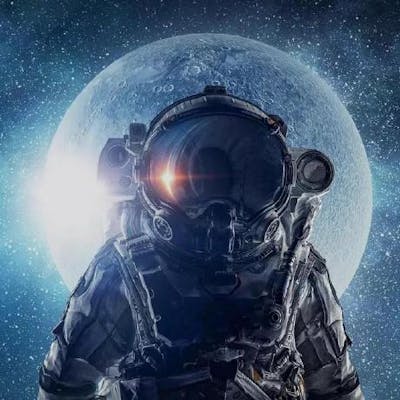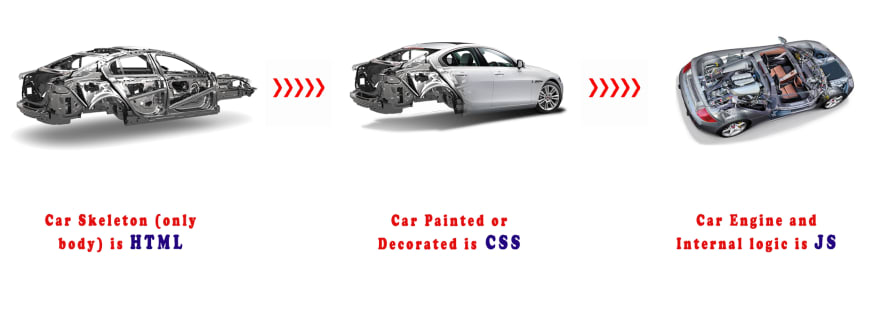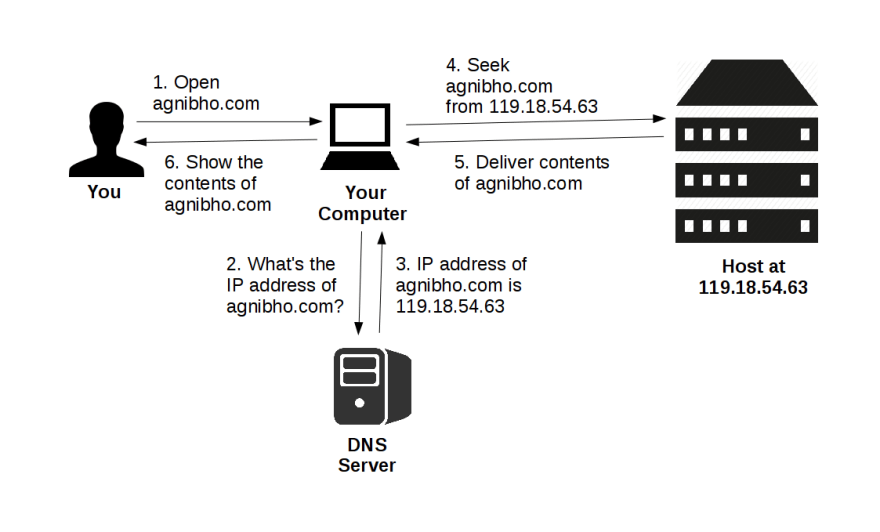If you are a developer or you might be coding. But here I’m going to discuss some points about how the actual website works. The basic requirement to structure the layout website is to build Front-End logic. You need to learn these languages.
HTML: works as the body of the website.
CSS: works as the beauty of the website.
JavaScript: works as the brain of the website.
Example:
To understand more simply way let’s take an example we have seen cars, it has a metallic body that works as an HTML part, It’s colour, design, and beautification are CSS part and Its main functions like the engine, accelerator, brake and clutch are JavaScript part which works as interior logic of the car.
1. HTML
HTML stands for Hypertext Markup Language.
It is basically a standard markup language for giving a static skeleton to web applications and websites.
It's a well-standardized system.
2. CSS
Cascading Style sheets which are known as CSS is a style sheet language that is used to handle the presentation of the web page containing HTML.
CSS is used to add styling to that bare-bone page created using HTML.
It makes our websites beautiful and modern looking.
3. JavaScript
JavaScript (JS) is a high-level dynamic interpreted programming language.
It allows client-side scripting to create completely dynamic web applications and websites.
JavaScript is used to program logic for the page layout
Example- What happens when a user hovers over a text When to hide or show elements etc?
Server Interaction
You might be thinking when we write the URLs in the browser (www.google.com) where it goes, the URL simply sends the request to DNS Server that translates a human-readable address (www.google.com) to a machine-readable IP address (234.83.16.235). This DNS server sends the request to the Main Server (a web host where your site lives on the internet) and responds to your browser you see the contents of the web page.
Installation
Download and Install VS Code.
Add Extension Live Server.
Basic Structure
Create Project: Open the directory in VS Code Editor. Create new file
.html,.cssand.jsBoiler Plate: Press! + Enter
Edit Settings: Set shortcuts to making easy and fast coding.
Copy the line
Move wheel zoom etc.
<!DOCTYPE html>
<html lang="en">
<head>
<meta charset="UTF-8">
<meta http-equiv="X-UA-Compatible" content="IE=edge">
<meta name="viewport" content="width=device-width, initial-scale=1.0">
<title>Document</title>
</head>
<body>
<!-- This is Body of html -->
</body>
</html>
Back End
After that, you need to know about Back-End Logic. In Back-End we (the developer) write the logic where all data are fetched from your database (a cloud data storage) and every interaction done by the user is reflected in the database these are done by several languages for ex: Python, JavaScript and PHP etc.
Framework
All three have a Framework (a structured-based template where lots of libraries and modules) provided to serve easily.
PHP: has provided Laravel.
Python: has provided Django (used for large scale) and Flask.
JavaScript: has provided NodeJS and ExpressJS. That’s all,
Happy Coding!



